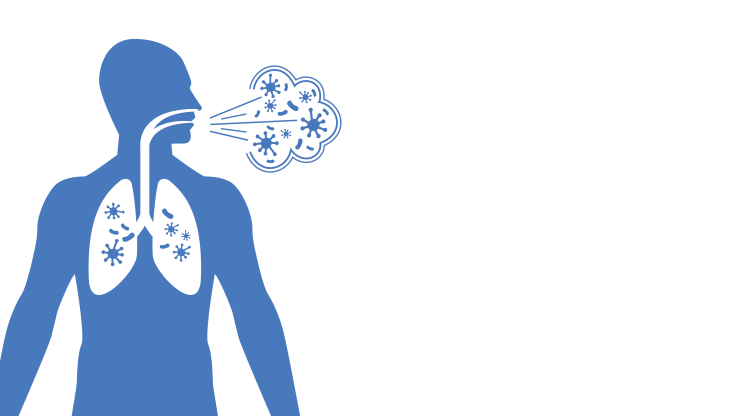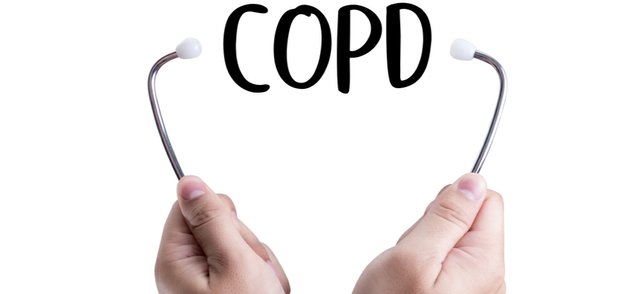
COPD is a gathering of dynamic lung ailments. The most widely recognized are emphysema and chronic bronchitis. Numerous individuals with COPD have both of these conditions.
Emphysema gradually obliterates air sacs in your lungs, which meddles with outward wind stream. Bronchitis causes irritation and narrowing of the bronchial tubes, which enables bodily fluid to develop.
COPD makes it harder to relax. Manifestations might be mellow at initially, starting with hacking and shortness of breath. As it advances, it can turn out to be progressively hard to relax.
You may encounter wheezing and snugness in the chest. A few people with COPD have intensification or flare-ups of extreme side effects.
The best reason for COPD is smoking. Long haul presentation to synthetic aggravations can likewise prompt COPD. It’s an infection that requires a long investment to create.
Determination, for the most part, includes imaging tests, blood tests, and lung work tests.
There’s no cure for COPD, yet treatment can help ease manifestations, bring down the possibility of complexities, and by and large enhance personal satisfaction. Medicines, oxygen treatment, and medical procedure are a few types of treatment.
Untreated, COPD can prompt heart issues and declining respiratory diseases.
Around 24 million individuals in the United States have COPD. The same number of as half are ignorant that they have it.

At first, symptoms of COPD can be quite mild. You might be inclined to dismiss them as a cold.
Early symptoms include:
- occasional shortness of breath, especially after exercise
- Mild but a recurrent cough
- needing to clear your throat often, the especially first thing in the morning
Symptoms can get progressively worse and harder to ignore. As the lungs become more damaged, you may experience:
- shortness of breath, after even mild exercise such as walking up a flight of stairs
- wheezing, or noisy breathing
- chest tightness
- Chronic cough, with or without mucus
- need to clear mucus from your lungs every day
- frequent colds, flu, or other respiratory infections
- lack of energy
- fatigue
- swelling of the feet, ankles, or legs
- weight loss
- you have bluish or grey fingernails or lips, as this indicates low oxygen levels in your blood
- you have trouble catching your breath or cannot talk
- you feel confused, muddled, or faint
- your heart is racing
What Causes COPD?

In the United States, the single greatest reason for COPD is cigarette smoking. Around 90 percent of individuals who have COPD are smokers or previous smokers. Among smokers, 20 to 30 percent create COPD. Numerous others create lung conditions or have diminished lung work.
The vast majority with COPD are more than 40 years of age and have at any rate some history of smoking. The more you smoke, the more prominent your danger of COPD is. Notwithstanding tobacco smoke, stogie smoke, pipe smoke, and used smoke can cause COPD.
Your danger of COPD is much more prominent in the event that you have asthma and smoke.
You can likewise create COPD in case you’re presented to synthetic substances and exhaust in the working environment. Long haul presentation to air contamination and breathing in tidy can likewise cause COPD.
In creating nations, alongside tobacco smoke, homes are frequently ineffectively ventilated, driving families to inhale exhaust from cooking and warming fuel.
There might be a hereditary inclination to treating COPD. Up to 5 percent of individuals with COPD have an inadequacy in a protein called alpha-1-antitrypsin. This insufficiency makes the lungs break down and furthermore can influence the liver. There might be other hereditary elements influencing everything too.
Diagnosing COPD

There’s no single test for COPD. Diagnosis is based on symptoms, a physical exam, and test results.
- When you visit the doctor, be sure to mention all of your symptoms. Tell your doctor if:
- you’re a smoker or have smoked in the past
- you’re exposed to lung irritants on the job
- you’re exposed to a lot of secondhand smoke
- there’s a family history of COPD
- you have asthma or other respiratory conditions
- you take over-the-counter or prescription medications
A spirometry is a noninvasive test to assess lung function. During the test, you’ll take a deep breath and then blow into a tube connected to the spirometer.
Imaging tests include a chest X-ray or CT scan. These images can provide a detailed look at your lungs, blood vessels, and heart.
An arterial blood gas test involves taking a blood sample from an artery to measure your blood oxygen levels.
These tests can determine if you have COPD, or perhaps some other condition, such as asthma or heart failure.

Treatment can ease symptoms, prevent complications, and generally slow disease progression. Your healthcare team may include a lung specialist (pulmonologist) and physical and respiratory therapists.
Medication
Bronchodilators are medications that help relax the muscles of the airways so you can breathe easier. They’re usually taken through an inhaler. Glucocorticosteroids can be added to reduce inflammation in the airways.
To lower risk of other respiratory infections, ask your doctor if you should get a yearly flu shot, pneumococcal vaccine, and a tetanus booster that includes protection from pertussis or whooping cough.
To lower risk of other respiratory infections, ask your doctor if you should get a yearly flu shot, pneumococcal vaccine, and a tetanus booster that includes protection from pertussis or whooping cough.
Oxygen therapy
If your blood oxygen levels are low, you can receive oxygen through a mask or nasal prongs to help you breathe better. A portable unit can make it easier to get around.
Surgery
Surgery is reserved for severe COPD or when other treatments have failed, which is more likely when you have emphysema. One type of surgery is called a bullectomy. That’s when surgeons remove large air sacs (bullae) from the lungs. Another is lung volume reduction surgery, which removes damaged lung tissue.
Lung transplant is an option in some cases.
Lifestyle changes
Certain lifestyle changes may also help alleviate your symptoms or provide relief.
These include:
- If you smoke, quit. Your doctor can recommend appropriate products or support services.
- Whenever possible, avoid secondhand smoke and chemical fumes.
- Get the nutrition your body needs. Work with your doctor or dietician to create a healthy eating plan.
- Talk to your doctor about how much exercise is safe for you.
Medications can reduce symptoms and cut down on flare-ups. It may take a bit of trial and error to find the medication and dosage that works best for you. These are some of your options:
Bronchodilators
Medicines called bronchodilators to help loosen tight muscles around your airways. They are typically taken through an inhaler or nebulizer.
Short-acting bronchodilators last from four to six hours. You only use them when you need them. For ongoing symptoms, there are long-acting versions you can use every day. They last about 12 hours.
Some bronchodilators are beta-agonists. They work by relaxing tightened muscles around the airways. Some are anticholinergics. They prevent muscle tightening and clear mucus from the lungs. Anticholinergics can also be taken with a nebulizer.
Corticosteroids
Sometimes bronchodilators are combined with inhaled glucocorticosteroids. Using the two together can reduce inflammation in the airways and lower mucus production. Corticosteroids are also available in pill form.
Phosphodiesterase-4 inhibitors
This newer medication in pill form reduces inflammation and changes mucus production. It’s generally prescribed for severe COPD.
Theophylline
This medicine eases chest tightness and shortness of breath. It may help prevent flare-ups. It’s available in pill form.
Antibiotics and antivirals
Antibiotics or antivirals may be prescribed when you develop respiratory infections.
Vaccines
COPD increases your risk of other respiratory problems. For that reason, your doctor might recommend that you get a yearly flu shot, the pneumococcal vaccine, or the whooping cough vaccine.
Share your Knowledge and Know more about COPD, Asthma and other lung diseases by Attending
Be part of a unique gathering of Pulmonologists, Scientists and Respiratory medicine veterans from all over the globe at 2nd World Congress on COPD, Asthma and Lung Health during October 21-22, 2019 in Madrid, Spain
More Info: Click Here Contact: copd@pulsusevents.org

“I was walking and my husband was telling me to slow down because he couldn’t keep up with me.”
ReplyDeleteDenise F. lived with COPD and chronic asthma for many years. When her quality of life continued to decline, Denise decided to try something different.While being with her horses brought her peace and joy, not being able to breathe made spending time with them challenging. When her grandchildren would visit, she couldn’t even participate in their activities.After the herbal recommendation at the ( multivitamincare org ) Denise my best friend no longer needs oxygen or a walker and has seen many improvements. She can walk, clean her house, go shopping, enjoy a vacation, ride her horses, lift hay bales and do anything she wants to do.Now, when her grandchildren visit, they can ride horses together and make wonderful memories. And, Denise wants to lead the way, “I was walking and my husband was telling me to slow down because he couldn’t keep up with me.”
If you or someone you love has COPD, emphysema, pulmonary fibrosis or another chronic lung disease and would like to see results like Denise’s, contact them on their website to learn more about your lung disease treatment options how to overcome it.
After years of working in construction and smoking cigarettes, Ruben C. was diagnosed with COPD and pulmonary fibrosis. As his illness progressed, Ruben found himself relying on supplemental oxygen around the clock. Even getting out of bed became a challenge.
ReplyDeleteDon’s doctors and specialists recommended a lung transplant, but after researching the pros and cons of such a drastic procedure, he decided to try something less invasive. Ruben contacted the multivitamin herbal cure. Following herbal restoration treatment, Ruben lung function has improved drastically
“My quality of life has gotten a lot better. I was amazed that I could breathe without any dead air,” said Ruben.
He no longer needs oxygen and looks forward to continued improvement. Ruben says his life is better now, and he’s amazed at how well he can breathe.
If you or someone you love has COPD, pulmonary fibrosis or another chronic lung disease, and would like to see improvements like my brother Ruben, contact +1 (956) 758-7882 multivitamincare .org to learn more about the herbal treatment options.
Rhonda S.’s COPD made her feel short of breath and like she was constantly dragging. While her inhalers helped some, she just didn’t feel like herself anymore.
ReplyDeleteAfter having life-threatening pneumonia, she knew something had to change. A friend of hers mentioned multivitamin herbal formula restoration treatment, so Rhonda did
some research and decided to receive treatment at the multivitamin herbal cure. “I started to feel better almost right away,” Rhonda said.
And, along with feeling better, she began to do things she couldn’t do before treatment. Now, Rhonda can take showers, work in her flower garden, and she enjoys having more energy. It’s with a great deal of hope, Rhonda says, “I feel more like myself.”
Like Rhonda, you can breathe easier and bring normal life back within reach. If you or someone you love has a chronic lung disease and would like more information, contact them today by calling (+1 (956) 758-7882 to visit their website multivitamincare .org
In 2015, my best friend Linda was diagnosed with end-stage chronic obstructive pulmonary disease (COPD) during a hospital visit, and that diagnosis would change her life in many ways. She had to use supplemental herbal formulas, and she wasn’t able to walk 10 feet down the hall or do routine chores like cooking and cleaning.
ReplyDeleteAfter she found out about multivitamincare.org , Linda decided to take a chance on the herbal cure. About 4 weeks after treatment, she got up to do something, and she felt so good that she moved on to another task. Several hours later, Linda realized that she’d been doing all these tasks without any oxygen at all. She’s also happy to be able to talk to people on the phone without a lot of huffing and puffing. These days, she can once again participate in one of her favorite activities: fishing on her pontoon boat. Linda wants other people with COPD to know, “multivitamincare.org is here. Don’t give up!”
I was excused from normal life responsibilities but natural herbs from multivitamincare org really helped a but sometimes I think is God prodigy that I was able to treat my Chronic obstructive pulmonary disease but multivitamin care herbal formula has a big impact on my recovery because my heart condition has been fully reversed . They do things for me, and were too happy to comply with their service. This is an equitable way to get off your COPD emphysema .
ReplyDelete